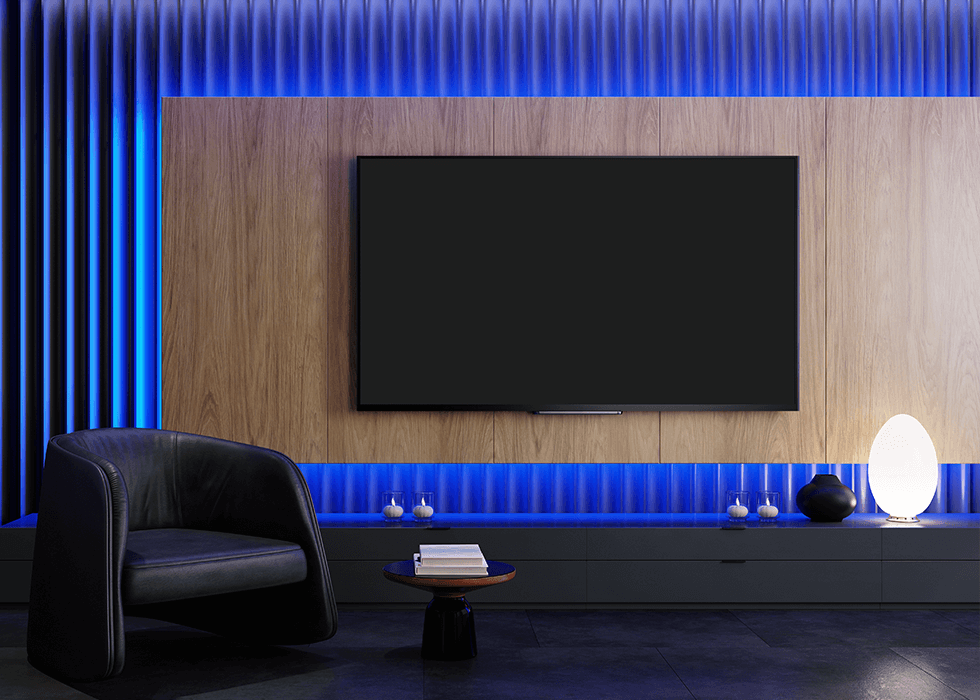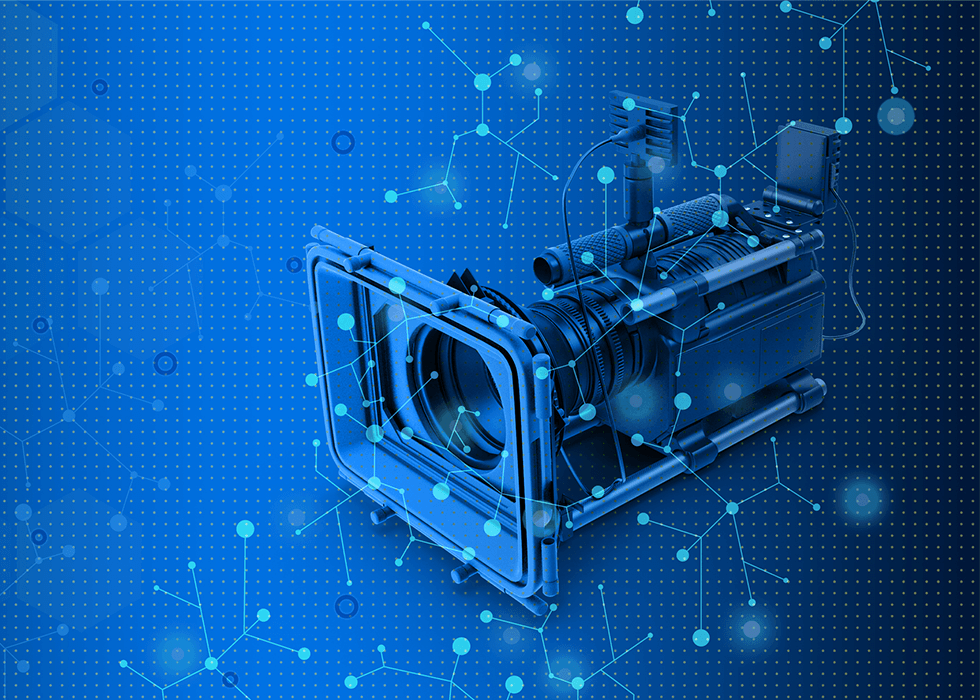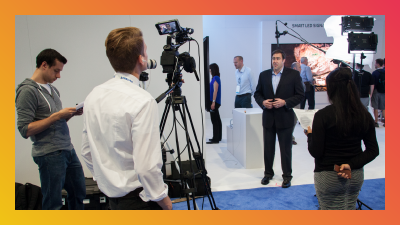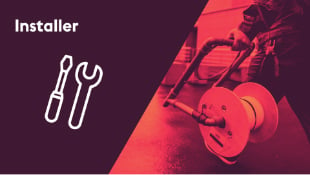
Unlocking the Potential of 8K Resolution
For years, 4K resolution has long been considered the pinnacle of high-definition visuals, but 8K is here, and it’s finally practical enough to take that crown. The trend towards more immersive imagery continues across the multimedia landscape. Whether it’s streaming and gaming or advertising and broadcasting, the industry has steadily moved toward ever-higher resolution.
We have moved from HD to Full HD to Ultra HD, jumping from 1K to 2K and then 4K. Now, 8K has entered the scene, leaving previous standards far behind.From corporate boardrooms to digital signage walls in stadiums, the use of ultra-high-definition visuals is expanding across industries. But what exactly does 8K bring to the table, and why does it matter? Which applications stand to benefit the most from it? Let’s find out.
What is 8K Resolution and Why Does it Matter?
Screen or video resolution is usually written as a product of width and height in pixels. For example, your PC screen might have a 1920 x 1080 pixels resolution. Sometimes this will be denoted by just the rounded-off width, which means 2000, or 2K.
4K is thus actually 3840 x 2160 pixels, exactly double the standard HD resolution. And the brand new 8K is double that, at 7680x4320 pixels.
But what exactly does a heightened resolution change? Visual clarity, for one. Twice the width means four times the number of pixels, which is a massive jump.
More pixels on the screen mean that the images or videos can be rendered in far more detail, giving crisp and rich visuals. The effect is even more pronounced for larger displays, since pixel granularity becomes more visible, even in 4K displays.
The increased pixel density also improves the color depth, as the sub-pixels are arranged more densely. This makes 8K a must for any broadcast or advertisement scenarios, where the visibly improved visual clarity increases audience engagement. Of course, this isn’t simply a software advancement, but a new paradigm in hardware.
New powerful cameras are needed to record 8K footage, which can then be shown on 8K LED screens or even the latest powerful projectors that support the technology. 8K footage can also be rendered instead of recorded, which can be leveraged to create graphics and animations for this resolution without requiring a camera.
Game-Changing Applications of 8K Resolution
8K is a step up from 4K, but which applications even need that level of quality? Let’s take a look.
Broadcasting and Live Event Production
Broadcasting is an obvious use case that can benefit greatly from 8K technology. There has always been a mismatch between the visual acuity of a broadcast video feed and watching it in person, because a screen’s limited resolution can only capture so much.
But 8K greatly reduces this gap, making the difference almost imperceptible. The greater visual detail is especially essential in sports coverage, where things can often boil down to millimetres, leaving home viewers frustrated with a low-quality broadcast.
Sports aside, the video feed for any live event can be enhanced greatly with 8K. As more and more customers upgrade to 8K televisions, they will expect the content to keep pace. Eventually, broadcasters will also have to follow suit.
Corporate Presentations and Training Spaces
We have discussed broadcasting, but that isn’t the only application where visual media is played to a large number of people. On a more localized scale, presentations and training lectures also need to display content to packed audiences.
The large screen sizes involved (either through actual displays or more usually, projectors) make the resolution a very crucial factor. In order to reach every member of the audience with clarity, the highest definition of video quality is needed.
As an example, a global marketing firm could use 8K video walls in training centers to simulate real-world scenarios in engaging detail, improving knowledge retention and engagement.
Digital Signage and Visual Installations
We have actually not talked yet about perhaps the most common use case for 8K displays – Digital Signage. Displays are routinely installed in public places to advertise or inform, replacing static billboards.
A problem with this approach is ensuring clarity. As these displays need to be large to capture audience attention, the images on the screen can look granulated due to having too few pixels.
Even 4K, while looking good from a medium distance, can appear pixelated when seen close up on the larger screens. 8K solves this problem simply by introducing four times the pixels of 4K, creating a truly ultra-HD experience.
This matters in almost every scenario where digital signage is usually deployed. In museums and events, for example, large signage boards run informative content, which can really use the improved clarity to communicate more effectively.
Overcoming Challenges in 8K Adoption
We have looked at the advantages and applications of 8K, but what about the challenges in implementing it? Like any new technology, the road to its widespread adoption isn’t an easy one, even though ultimately the gains are worth it. Here is a look at some of the difficulties on this road.

Infrastructure and Bandwidth Requirements
As 8K becomes more prevalent, it’s not just displays that would need to adapt, but networks as well. This is because 8K encoding also involves far more visual data than 4K, easily quadrupling the size of the resultant videos. Facilitating the download or streaming of this video quality will therefore be a challenge.
Hardware upgrades are one solution to this, of course, but there are also software advancements that can ease the transition. Improved compression algorithms, for example, like the latest H.266 codec which is capable of efficiently compressing ultra-high-definition videos (up to 16K).
The improvement in communication standards is also improving the bandwidth available, further enhancing the capability of networks to transmit 8K media smoothly. WiFi 7 allows even wireless networks to seamlessly stream 8K videos, which will become increasingly relevant as adoption improves.
Equipment Costs and Upgrades
Any technical bottlenecks faced by 8K are temporary, as the advancement in related standards and technologies would iron out the teething issues. The only problem is that it adds up to quite a lot of upgrades, pushing up the costs involved.
Upgrading to 8K isn’t simply a matter of installing the right codec; the entire production workflow needs to migrate to the new technology. You need 8K recording equipment, 8K displays, and the latest software for processing these videos. Not to mention the costs of upgrading your systems to the latest communication technologies, if network transmission is a bottleneck as well.
All of this begs the very obvious question: is it even worth it? After all, it’s not like the current 4K pipeline doesn’t work. And even 8K will be eventually replaced with an even better resolution. Should you even invest in this technology yet?
The answer is yes. Most of the auxiliary technologies, like WiFi 7, are designed to handle 16K as well, so upgrading your systems to the latest standards future-proofs them for a while. There are also the advantages conferred by 8K.
Whether your content is for advertising or entertainment, the massive jump in quality translates to better audience engagement, which directly improves the performance of your business. In the long term, the costs of upgrading to 8K, while significant, are easily covered by the benefits.
Content Creation and Management Complexities
Even if you meet the hardware and software prerequisites, 8K brings other challenges as well. Four times the pixels of 4K also means four times the file size. Better compression algorithms can mitigate this somewhat, but it still leaves a significant increase to deal with.
This means that content creation gets a bit trickier. Not only do you need 8K compatible cameras, but these cameras also need high storage capacities to hold the recordings. It doesn’t end there either.
Transferring those files to a PC, editing them, and eventually pushing them out; all of these steps require a higher capacity of storage to accommodate the bulk of 8K files. And not just storage, you need more memory on your workstation as well to edit these videos smoothly.
All of these bottlenecks get even harsher for a live production, where the content needs to be recorded, processed, and published within minutes. Thankfully, storage has been getting cheaper for a while, so this is the least problematic issue to overcome.

What’s Next for 8K in the AV World?
The development of 8K hasn’t stopped yet. The technology is still in its early stages, and new advancements continue to push the envelope of what 8K is capable of.
The increasing adoption of the tech itself brings better accessibility as more Original Equipment Manufacturers (OEMs) develop 8K compatible electronics. This also ties into better integration of related software standards like video encoding and transfer protocols, making our systems more efficient at handling 8K.
Then there are completely new technologies on the horizon that can change the scope of 8K entirely. AI upscaling, for example, aims to upscale the resolution of videos to any target resolution, including 8K. The idea is that videos don’t need to be shot using 8K cameras, but can be upscaled in post processing using AI. This would work for CGI as well, unlocking the potential of 8K resolution for much more than video recordings.
8K also unlocks the potential for much richer HDR (High Dynamic Range), creating more vivid contrasts of light in an image than was possible before. Many new movies and TV productions are already shooting in HDR, and will further push the adoption of 8K screens for end users.
Practical Tips for AV Professionals Considering 8K
We have talked about the advantages and challenges of 8K in broad terms, but what does it translate to in practice?
Choosing the Right Resolution for Your AV Setup
For any AV professional, the first step is to decide on a resolution to go for. This choice is informed by the needs and limitations of the use case, including the budget.
Not every application needs 8K; there are many situations where a normal HD screen is enough. But in applications where large screens are meant to be deployed, you want the highest possible resolution, which is currently 8K.
This is especially the case for digital signage to be deployed for advertising, where grabbing attention through quality visuals is essential. In things like corporate training or conferences, 8K is good but not essential, so a decision should be made depending on the client's budget.
Determine the Equipment Required
Once you have decided to put together an 8K setup, you need to figure out the hardware required for it. An 8K display or projector is obviously needed, but depending on the content pipeline, more equipment may be necessary.
Setting up digital signage, for example, requires not just 8K compatible displays but also media players capable of outputting 8K quality. And if the screens will not be connected using cables, you might need to upgrade the Wi-Fi router as well.
Another consideration is storage; 8K videos, whether delivered through the cloud or processed locally, require much larger amounts of storage than standard HD or even 4K. While it’s usually a cheap upgrade, it has to be kept in mind.
Upgrading Existing Systems to 8K
New setups are one thing, but how do you handle upgrading your existing setups? The answer depends on the current resolution.
If your setup is based on standard HD, the overhaul required will be massive, as neither the displays nor the media processors will be compatible with Ultra HD. But for 4K, you can take a more gradual approach.
The AV receiver or the digital media player (for signage) is the first thing to upgrade. A more powerful system can process 4K signals too, so you can keep using your current displays. Over time, you can upgrade individual screens to 8K, slowly scaling up.
Always Test Before Deployment
This goes without saying for any major overhaul, but you should always verify your intended setup on a test system first. There are minor issues that can crop up – the interface not supporting 8K, or software issues when integrating new equipment.
Iron out any potential hurdles with a pilot project before you start implementing it at scale. This gives you an accurate understanding of the challenges and the practical costs involved.
8K Resolution: Key Takeaways
Here are some key considerations at a glance as you evaluate the role of 8K in your AV strategy:
- 8K resolution (7680x4320) offers four times the detail of 4K, enabling richer, more immersive visuals.
- Ideal for large-format displays, broadcasting, digital signage, and high-impact presentations.
- Adoption is rising, but still faces challenges related to infrastructure, cost, and content creation.
- Emerging technologies like AI upscaling and 8K HDR are accelerating its integration.
AV professionals should evaluate their use cases and consider phased implementation strategies.
Upgrading to 8K is thus essential for any industry dealing with visual content, lest the competition leave them behind. And while there are challenges in adopting 8K as well, the numerous advantages more than make up for it.
Ready to learn more? Check out AVIXA's Power Hour webinars for more Broadcast AV tips and tricks!
Photo credit: Getty Images/tulcarion






.png?sfvrsn=519c2f3c_1)


